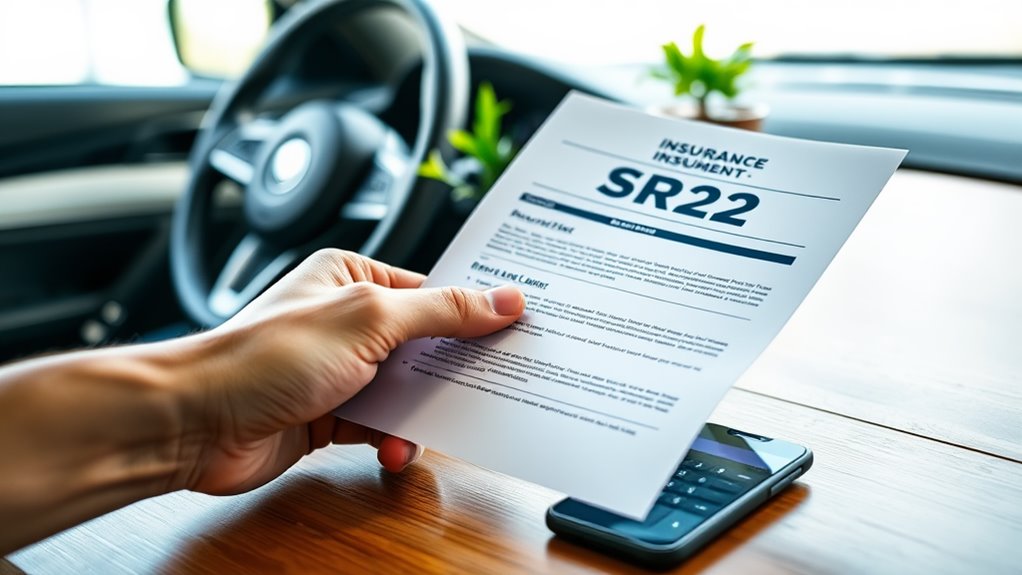Essential Steps for License Reinstatement Requirements
Did you know that reinstating a revoked license often involves more than just paying a fee? You'll need to tackle any outstanding obligations first, which can include completing specific programs or installing an ignition interlock device for certain offenses. Understanding the exact requirements in your state is essential, as they can vary greatly. Knowing these steps can make the reinstatement process smoother and quicker for you.
When you've faced license revocation, understanding the reinstatement requirements can be fundamental for getting back on the road. Depending on the reason for your license revocation, the steps you need to take may vary. Common causes include alcohol-related offenses, drug offenses, unpaid fines or taxes, traffic accidents, and child support defaults. Each of these violations carries specific conditions that you must fulfill before you can regain your driving privileges.
First, it's important to address any outstanding obligations related to your revocation. If your license was revoked due to an alcohol-related offense, you may face additional requirements, such as installing an ignition interlock device. This device is often mandatory, especially for those with higher blood alcohol content (BAC) levels. It's generally required for a minimum of six months, and you'll need to account for maintenance costs and periodic inspections during that time. If you are classified as a Persistent Drunk Driver, the requirements for reinstatement may become even more stringent. Additionally, having affordable SR-22 insurance can help you meet the financial responsibility required for reinstatement.
Address any outstanding obligations, such as installing an ignition interlock device for alcohol-related offenses, to regain your driving privileges.
Regarding reinstatement fees, they can differ greatly from state to state. For instance, in Colorado, you'll need to pay a $95 reinstatement fee, while Tennessee requires a $103 reinstatement fee along with a $50 SR-22 fee. Be prepared for additional costs for a new license application, which could vary based on your specific circumstances. Payment methods generally include checks, money orders, or online payments, so make sure to check the accepted forms before proceeding.
Insurance requirements also play an important role in the reinstatement process. If you're deemed a high-risk driver, you might've to obtain SR-22 insurance to prove financial responsibility. This usually involves meeting state-specific minimums for liability coverage. If your employer offers insurance, this might be acceptable in some cases, especially if you're applying for a restricted license.
Educational and therapy requirements shouldn't be overlooked, particularly if your revocation is linked to DUI offenses. You'll likely need to complete alcohol education programs and possibly engage in therapy sessions for substance abuse counseling. The duration of these programs can fluctuate based on the severity of your offense or whether you've been a repeat offender. Keep in mind that you'll be responsible for the costs involved, though financial aid options may be available.
The reinstatement process itself can vary based on your state and situation. Some states offer an online application through their DMV portals, allowing for a more streamlined document submission and fee payment. If you're in Colorado, for instance, you'll need the DR 2870 form for mail-in applications. In-person applications are typically limited to specific reasons, like addressing unpaid tickets, so plan accordingly.
Finally, always factor in the time frames required for the reinstatement process. You'll want to submit your documents well in advance—generally 30 days—so you don't face unnecessary delays. By staying organized and informed about these fundamental steps, you can navigate the reinstatement process more efficiently and get back behind the wheel sooner.
Conclusion
Maneuvering through the license reinstatement process might seem intimidating, but breaking it down into manageable steps makes it achievable. You might worry about the time it takes, but addressing obligations early—like paying fines or completing programs—can streamline the process. By gathering all necessary documentation and understanding your state's requirements, you can reduce delays and get back on the road sooner than you think. Stay proactive, and you'll find that reinstatement is within your reach.





